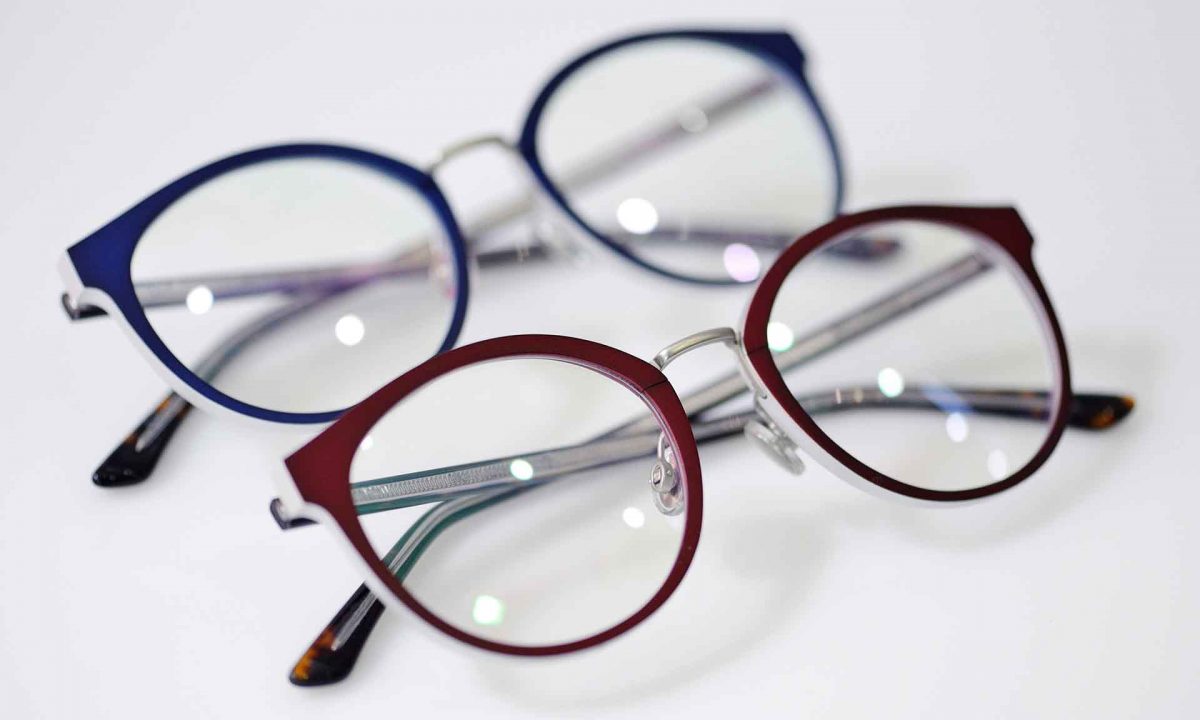
What is The Difference Between Myopia, Hyperopia, and Presbyopia?
If you’ve recently visited your optometrist there’s a chance you may have been diagnosed with myopia (near-sightedness), hyperopia (far-sightedness), or presbyopia. These refractive errors are extremely common and are easily treatable with corrective glasses or lenses – if the condition is severe enough to require correction.
Each issue is caused by different changes in the eyeball and where light is concentrated within it, creating different symptoms or side effects. In fact, many symptoms are common in each of these conditions, making it extremely important to consult a licensed optometrist for an in-depth exam. To understand the difference between these refractive errors, it’s first important to understand what happens to light when it enters a normal, unaffected eye.

The Normal Eye
In a normal eye without refractive errors, light rays enter the pupil, pass through the cornea and lens, and are focused on the retina at the back of the eye. The focused light rays are transmitted to the brain which interprets a clear image. However, if the light is not focused properly on the retina, a person will not be able to see clearly.
Additionally, the eyes lens should be flexible. Using the circular muscles surrounding it, the lens will constrict to focus on something near or relax when looking at a distance. This allows the lens to curve and adapt its focusing power. Changes to the lens condition affect vision clarity as well.
What is Myopia?
More commonly referred to as near-sightedness, myopia is a condition where a person sees objects that are close to them clearly, but their long-distance vision is blurry. In someone with myopia, light enters the eye and focuses in front of the retina, instead of focusing on its surface. Usually, this is due to the eyeball being too long, or due to incorrect curvature of the eye’s cornea or lens, causing light to refract incorrectly.
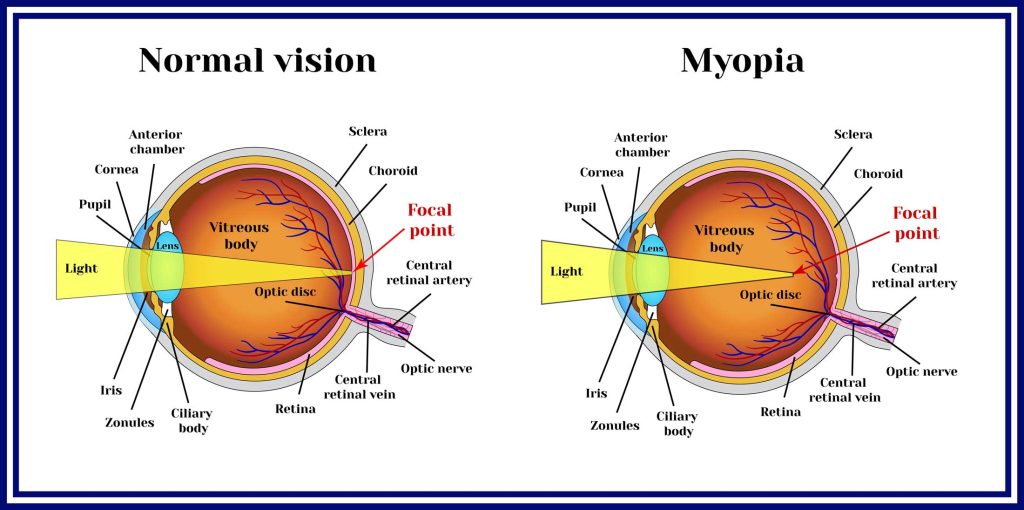
Symptoms of Myopia
- Faraway objects look blurred or fuzzy
- Close items appear clear
- Headaches
- Eye strain
- Squinting
- Tiredness when driving, playing sports or looking more than a few feet away
Cause and Treatment
There’s no proven cause of myopia, however, there is an increased chance of a child being nearsighted if one or both parents are as well. The condition can develop in childhood or in the teenage years but generally stabilizes in early adulthood. Luckily, myopia is easily treated with prescription glasses, contact lenses, or refractive surgery if vision is severely affected.
What is Hyperopia?
This refractive error has the opposite effect as myopia. Hyperopia is also known as being far-sighted, as the condition causes people to have blurred vision closeup but clear long-distance vision. This is caused by having an eyeball that is too short or from not having enough focusing power. The result is light rays are focused behind the retina, rather than on its surface.

Symptoms of Hyperopia
- Nearby objects may appear blurry
- The need to squint to see clearly
- You have eyestrain, including burning eyes, and aching in or around the eyes
- You have general eye discomfort of a headache after doing close tasks, such as reading, writing, computer work or drawing
Cause and Treatment
Far-sightedness can also be a hereditary condition that is passed down from parents. The disorder will often present in children during their early school years, as they may have trouble reading from the chalkboard or whiteboard. However, hyperopia is also a condition that children have been known to grown out of. As a child grows into a teen, their eyes can grow and increase in strength, which may improve long-distance vision.
If children have serious vision issues or severe symptoms like headaches, their optometrist may prescribe glasses for the time being. If hyperopia persists into adulthood, contact lenses or corrective surgery may be prescribed by an optometrist as well.
Presbyopia
Presbyopia is a result of changes to the eye lens. With presbyopia, the lens hardens or thickens and becomes less flexible. This condition makes it unable to change its shape and focus on images. Depending on the severity of the changes to the lens, both short and long-distance vision may be affected.

Symptoms of Presbyopia
- A tendency to hold reading material farther away to make the letters clearer
- Blurred vision at normal reading distance
- Eyestrain or headaches after reading or doing close-up work
Cause and Treatment
Presbyopia is a naturally occurring condition that can develop in people after the age of 40. Over time the lens of the eye can harden or thicken, resulting in vision changes. However, certain things can increase the presence, or speed up the progression of presbyopia. Some medical conditions like diabetes or cardiovascular disease, or even certain drugs like antidepressants can cause presbyopia over time.
What’s The Difference Between Myopia, Hyperopia, and Presbyopia?
There can sometimes be confusion about the differences between these refraction errors. Myopia and hyperopia are similar in that they are both conditions of the eye caused by light not being focused on the retina correctly. As discussed above, light focuses in front of the retina with myopia, or behind the retina in hyperopia.
Presbyopia, however, is completely different from these conditions altogether. Rather than being a result of where light focuses inside the eye, presbyopia is caused by physical changes to the eye’s lens. This is also the only refractive error that is predominately caused by ageing, with most people over 40 reporting some level of presbyopia.
Similar Symptoms
There is good reason for some confusion between these three eye conditions. Many of the symptoms are similar to one another, making the difference between myopia, hyperopia, and presbyopia hard to determine by the average person. Be sure to schedule regular check-ups with your optometrist if you have any of the following symptoms described above, to ensure a proper diagnosis and treatment plan. Contact New Optical Palace to book an eye exam.

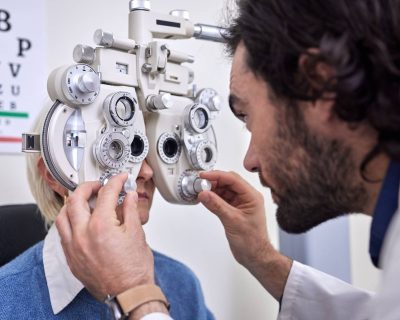
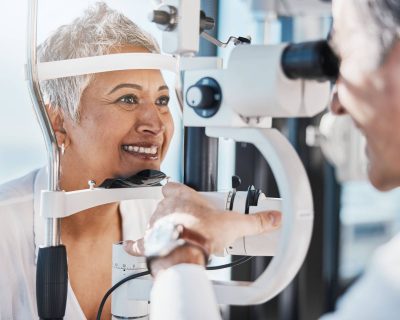

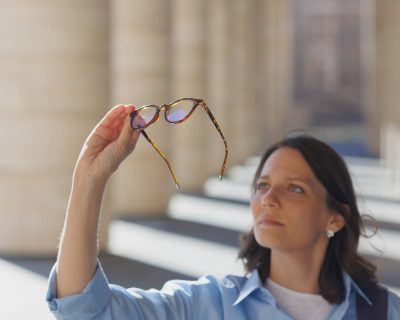
2 comments on “What is The Difference Between Myopia, Hyperopia, and Presbyopia?”